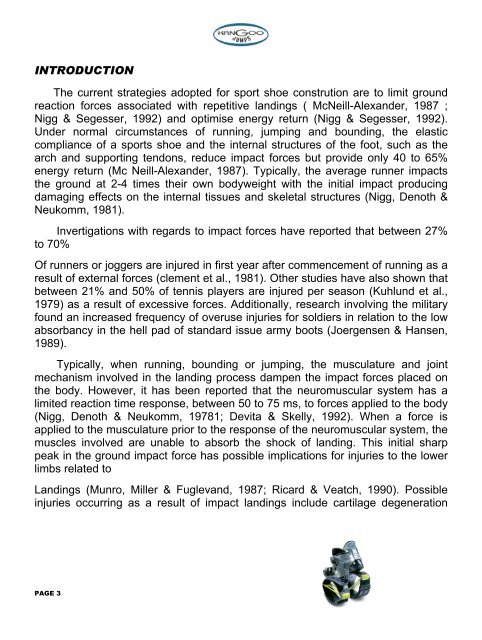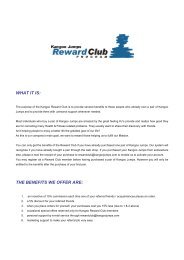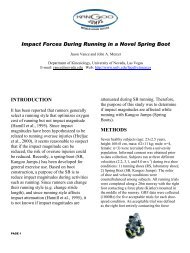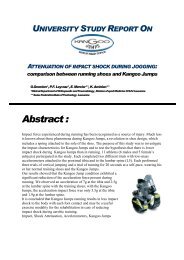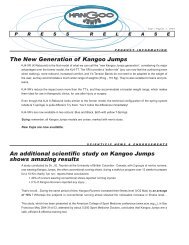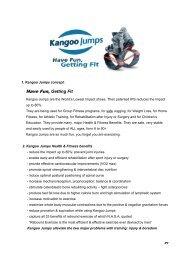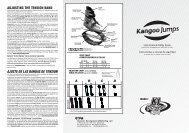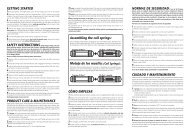Southern Cross University Study - Kangoo Jumps
Southern Cross University Study - Kangoo Jumps
Southern Cross University Study - Kangoo Jumps
You also want an ePaper? Increase the reach of your titles
YUMPU automatically turns print PDFs into web optimized ePapers that Google loves.
INTRODUCTION<br />
The current strategies adopted for sport shoe constrution are to limit ground<br />
reaction forces associated with repetitive landings ( McNeill-Alexander, 1987 ;<br />
Nigg & Segesser, 1992) and optimise energy return (Nigg & Segesser, 1992).<br />
Under normal circumstances of running, jumping and bounding, the elastic<br />
compliance of a sports shoe and the internal structures of the foot, such as the<br />
arch and supporting tendons, reduce impact forces but provide only 40 to 65%<br />
energy return (Mc Neill-Alexander, 1987). Typically, the average runner impacts<br />
the ground at 2-4 times their own bodyweight with the initial impact producing<br />
damaging effects on the internal tissues and skeletal structures (Nigg, Denoth &<br />
Neukomm, 1981).<br />
Invertigations with regards to impact forces have reported that between 27%<br />
to 70%<br />
Of runners or joggers are injured in first year after commencement of running as a<br />
result of external forces (clement et al., 1981). Other studies have also shown that<br />
between 21% and 50% of tennis players are injured per season (Kuhlund et al.,<br />
1979) as a result of excessive forces. Additionally, research involving the military<br />
found an increased frequency of overuse injuries for soldiers in relation to the low<br />
absorbancy in the hell pad of standard issue army boots (Joergensen & Hansen,<br />
1989).<br />
Typically, when running, bounding or jumping, the musculature and joint<br />
mechanism involved in the landing process dampen the impact forces placed on<br />
the body. However, it has been reported that the neuromuscular system has a<br />
limited reaction time response, between 50 to 75 ms, to forces applied to the body<br />
(Nigg, Denoth & Neukomm, 19781; Devita & Skelly, 1992). When a force is<br />
applied to the musculature prior to the response of the neuromuscular system, the<br />
muscles involved are unable to absorb the shock of landing. This initial sharp<br />
peak in the ground impact force has possible implications for injuries to the lower<br />
limbs related to<br />
Landings (Munro, Miller & Fuglevand, 1987; Ricard & Veatch, 1990). Possible<br />
injuries occurring as a result of impact landings include cartilage degeneration<br />
PAGE 3


